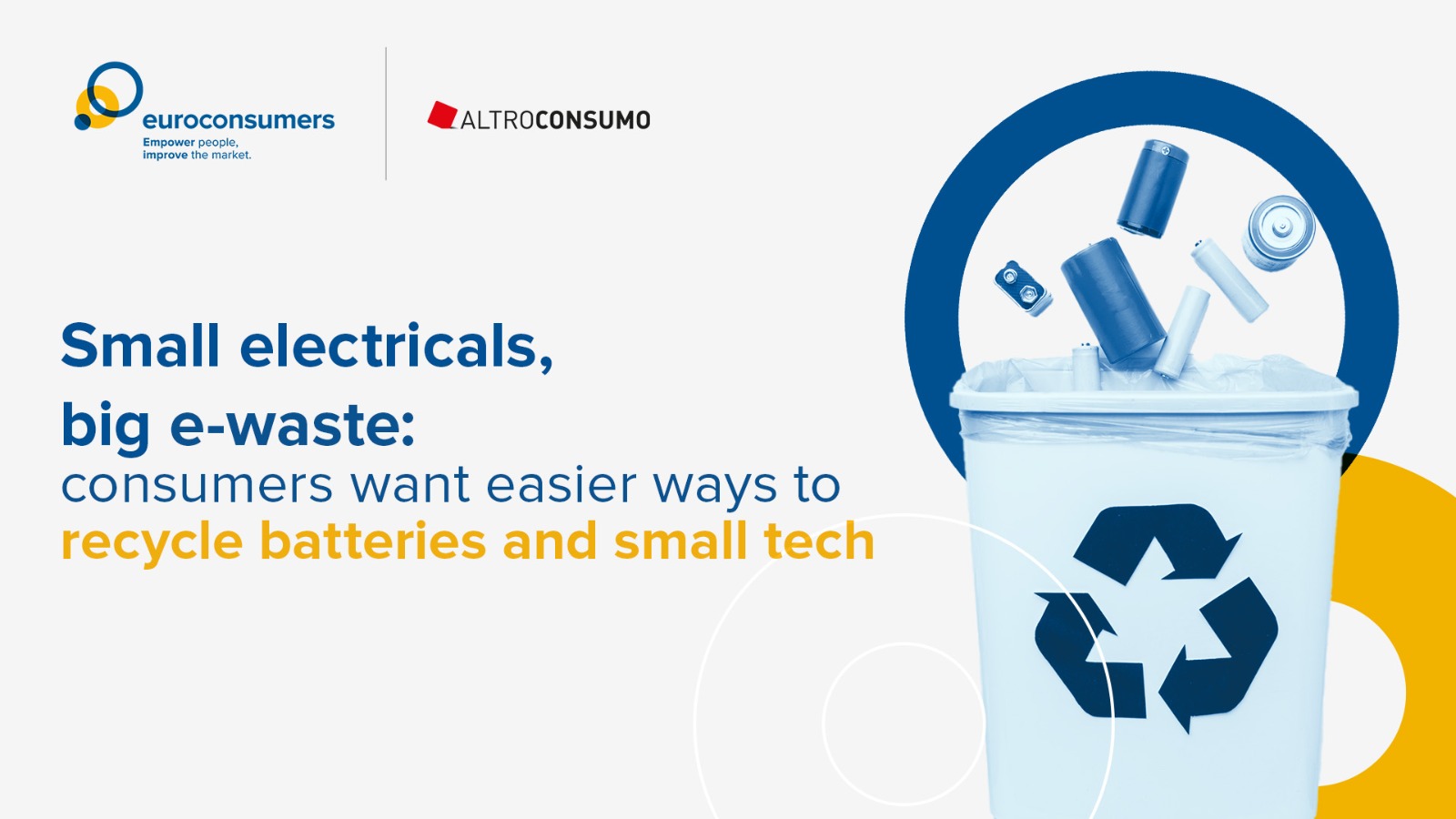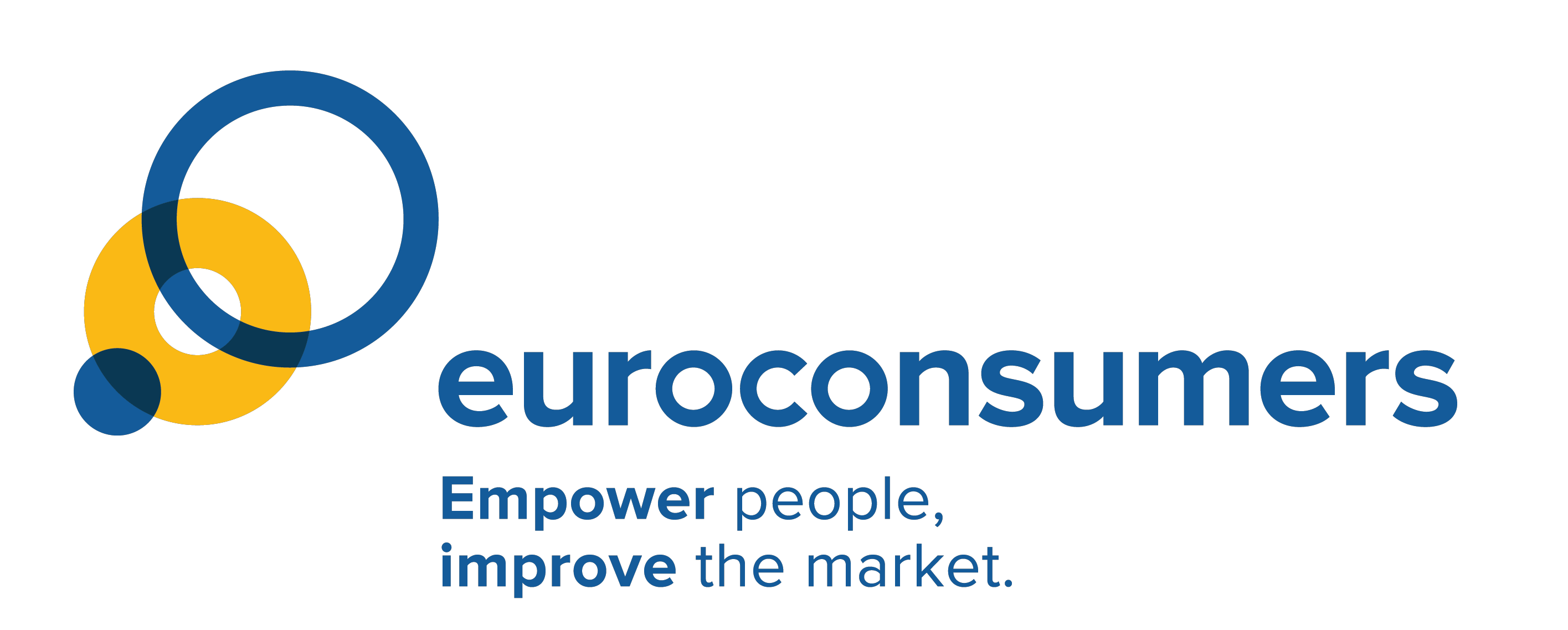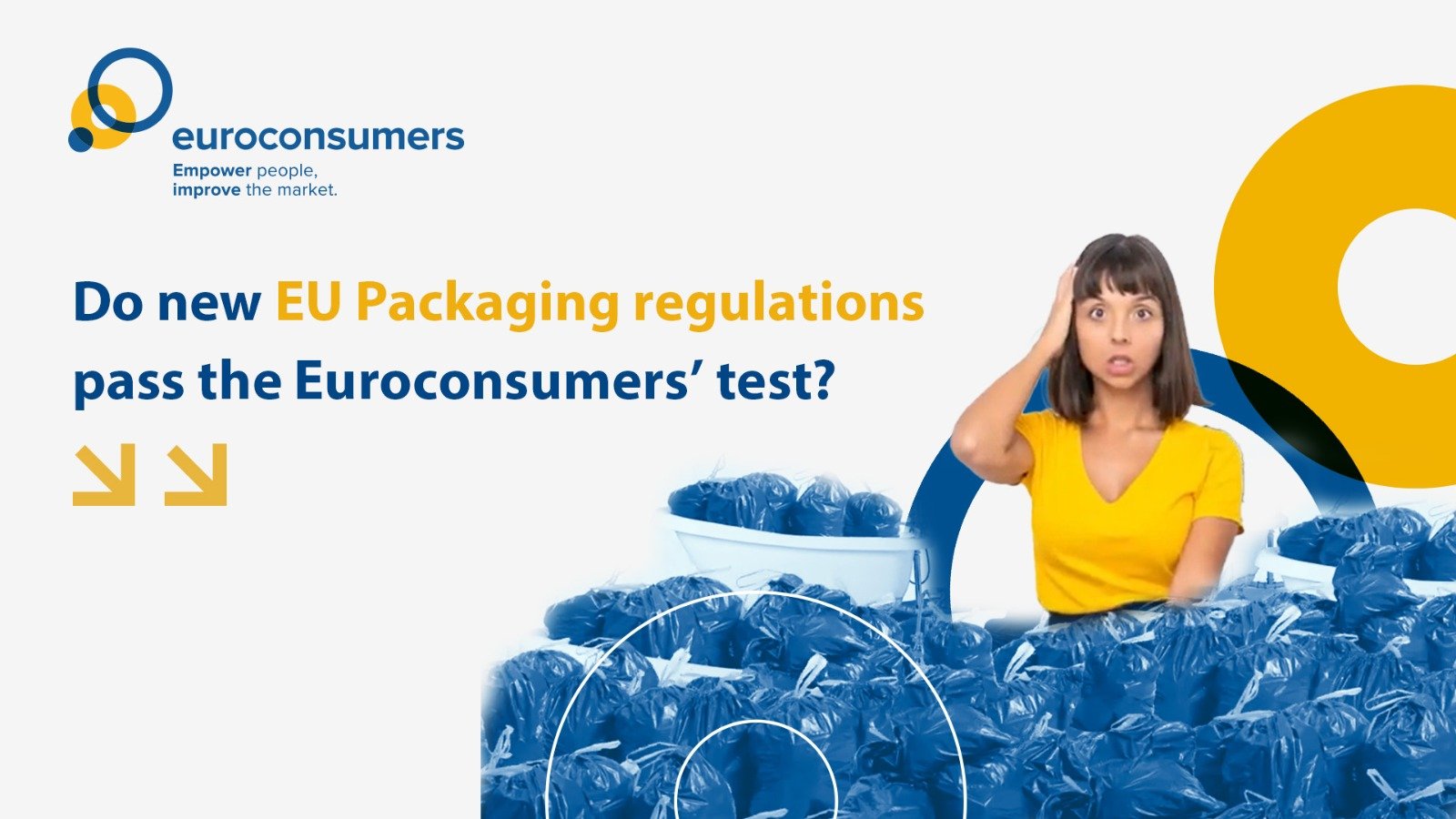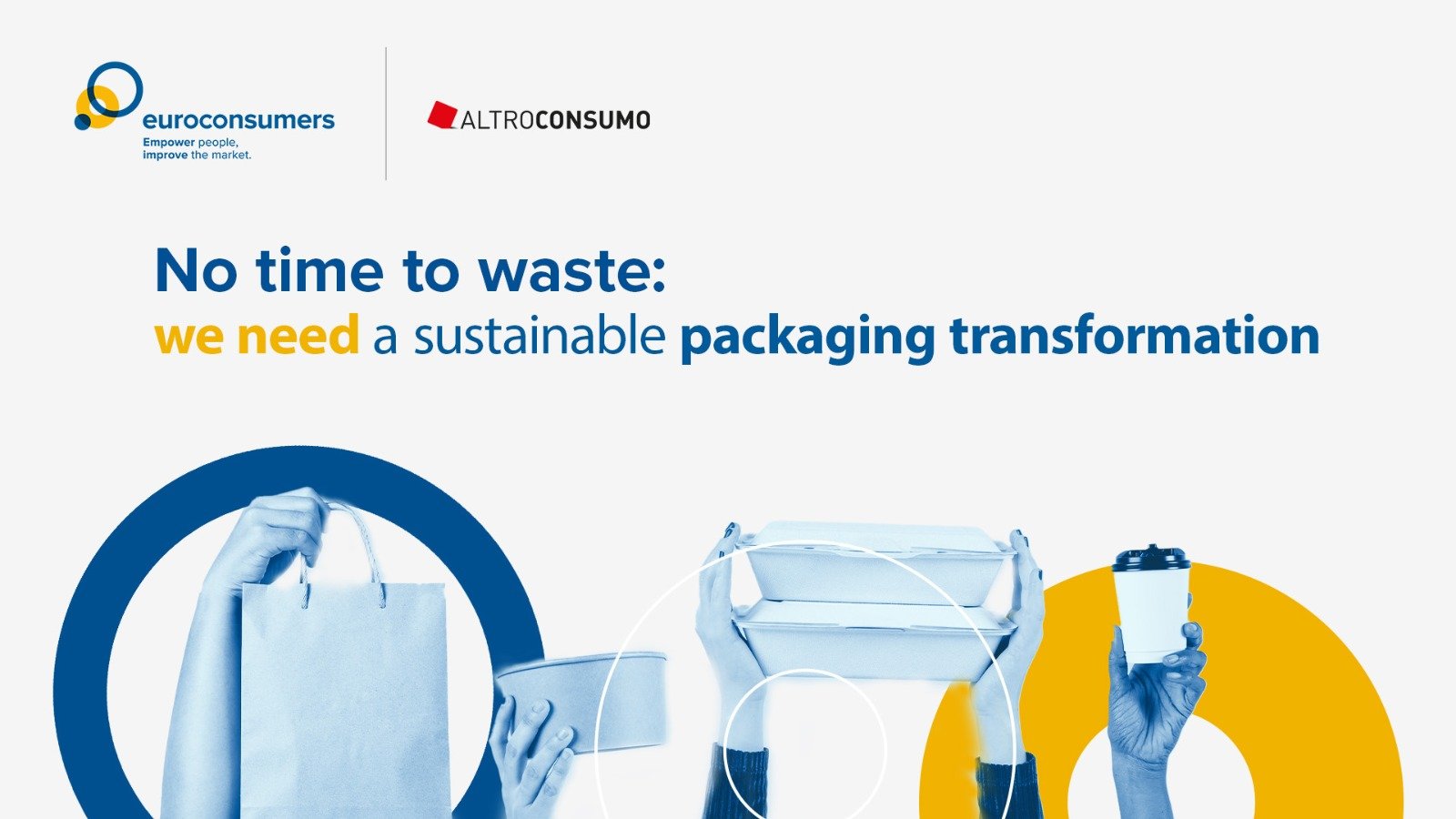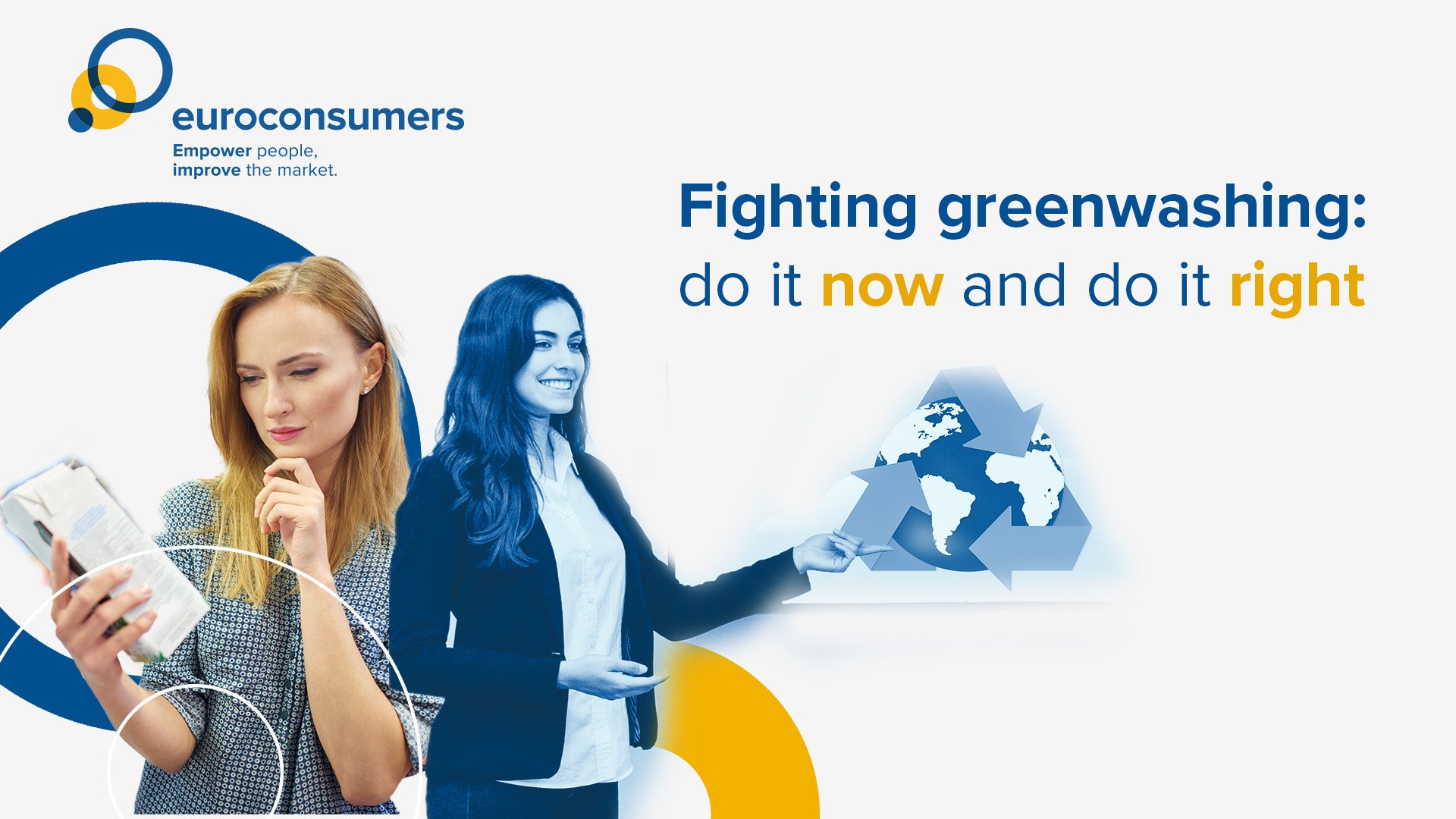What the checklist said: Decisions need to be based on independent technical and scientific studies that analyze the entire life-cycle of packaging products (LCAs). Reuse should be prioritized if the environmental impacts over the lifecycle are lower than for single use packaging.
Background: This was one of the most controversial areas of the regulation. Industry lobbyists disputed the weight the proposal gave to evidence on reusable versus single-use, developing their own life-cycle analyses to show that context is everything in deciding the best option. In turn, environmental groups produced their own LCAs disputing the industry conclusions.
This confirmed Euroconsumers’ firm checklist principle that independent, scientific analysis is essential for deciding policy. The initial analysis by the Commission was not strong enough and almost derailed the whole discussion.
We were therefore very pleased when the Commission’s Joint Research Council (JRC) settled the argument with a detailed evaluation study of the environmental impacts of single and multiple use packaging in different scenarios.
The final report said: “it was not possible to conclude that certain packaging options have systematically lower impacts in all scenarios” once things like the material composition and expected number of uses are taken into account. These results fed into the final published regulation.
What the new rules say: “Take-away businesses will newly have the obligation to offer customers the possibility of using their own containers at no additional charge, and by 2030, they will have to endeavour to offer 10% of products in packaging formats suitable for re-use.”
Does it deliver on science based approach? Yes.
The JRC’s independent Life Cycle Assessment made a vital contribution to the debate. Ideally, the selection of multiple use, reusable and single use containers in the study for takeaway food and drinks would have been larger, to secure more conclusive results, but all in all the scientific evidence is sufficiently solid to support the delivery of the new regulation.
What our checklist said: Reusable packaging and recycled content both require measures to minimize and cut out hazardous substances from packaging material to safeguard consumer health. Any assessment of the most suitable packaging waste management system should consider its environmental, hygiene and health impacts.
What the new rules say: Article 10 and 25 sets out mandatory hygiene standards for packaging that is designed to be reused and refilled – with Article 45 stating that national reuse and refill systems should not compromise on food hygiene or customer safety.
In terms of hazardous substances, there is a “new restriction on the placing on the market of food contact packaging containing per- and polyfluorinated alkyl substances (PFASs) above [certain] thresholds”
Does it deliver on health and safety? Yes.
This is good news for consumers and they can be confident they will be safe with new recycling and reuse measures which will encourage more engagement. The ban on toxic chemicals in food packaging that can transfer to people by 2026 is a win for consumers and the environment.
What our checklist said: Be careful with the introduction of overlapping systems for the same type of materials, as this could lead to confusion amongst consumers. Recent research found easy-to use and understand recycling facilities and hands-on information were essential components to help consumers actively participate in waste management.
What the new rules say: the regulation outlines some different systems and targets, such as requiring countries to set up Deposit Return Schemes for single use plastic and metal drinks cans, or returnable glass packaging schemes, and allowing reusable containers for take-aways.
Does it deliver on keeping it simple? Yes.
Setting out common systems for common types of waste is welcome and could be a useful starting point for system design on the ground. Here, the key will be in delivering some of the ideas like deposit return schemes in a way that’s simple and easy for people, with clear information linked to simplified labeling (see number 5 ‘The power of information’). We want to see authorities putting as much time into easy access and understandable systems as they do into the technical process.
What our checklist said: The higher costs related to adopting a more sustainable lifestyle are still by far the main barrier for consumers. Waste management systems need to be affordable for consumers. If it comes at a higher cost, it will be challenging to accept and to reach the target.
What the new rules say: On types of packaging, the proposal sets some parameters to limit excess costs to consumers. For example, if consumers use their own container for take-aways, the retailer is not allowed to charge more than they would for single use packaging, and again, where reusable packaging is offered by retailers, it should come at no higher costs, and in no less favorable conditions than something coming in single use packaging.
Does it deliver on affordability? No.
We’ve seen time and time again that putting the financial burden on consumers will deter them from participating in recycling and reuse systems. The regulation missed an opportunity to set out clear lines on where costs should fall. When the systems required by the regulation are rolled out in member states, affordability and the spread of the financial burden must be central to plans.
What our checklist said: Empowerment starts with the right information, clear communication and educational campaigns. Likewise clear and standard labeling is needed across the EU.
What the new rules say: “Packaging placed on the market shall be marked with a label containing information on its material composition in order to facilitate consumer sorting. The label shall be based on pictograms and be easily understandable, including for persons with disabilities.”
“Reusable packaging … shall bear a label informing users that the packaging is reusable. Further information on reusability shall be made available through a QR code or other type of standardized, open, digital data carrier, including the availability of a local, national or EU-wide system for re-use and information on collection points, and that facilitates the tracking of the packaging and the calculation of trips and rotations, or an average estimation if that calculation is not feasible. In addition, reusable sales packaging shall be clearly identified and distinguished from single use packaging at the point of sale.”
Does it deliver on the power of information? Yes.
Mandatory, standardized symbols covering what to do with packaging are urgently needed to cut down on the 400-plus eco-labels used in the EU at the moment for packaging information.. The only problem is that it won’t happen fast. The regulation gives a long lead in time to implement new labeling, leaving consumers stuck with hundreds of eco-labels for years to come.
The verdict is in: implementation matters
Consumers are ready to do their part in managing the rising tide of waste. With the right systems in place they can do this faster and with confidence that they are part of a revolution in sustainability.
Passing the first EU regulation on packaging waste is a great starting point for this and as our checklist shows, has many strong points that will put member states and consumers on the path to better waste management. But to be really effective, systems need to be easy to navigate, affordable and information must be crystal clear.
Much of this will be down to member states to execute, and it’s here we urge national, local, city and regional authorities to delve into the Euroconsumers Checklist and focus on how to put consumers at the centre of the systems.
If systems are science-backed, affordable, intuitive, understandable, safe and no danger to health the chances of getting even more consumers on board are high.
Now the regulation is adopted, it’s time to empower consumers to improve the waste management market.
